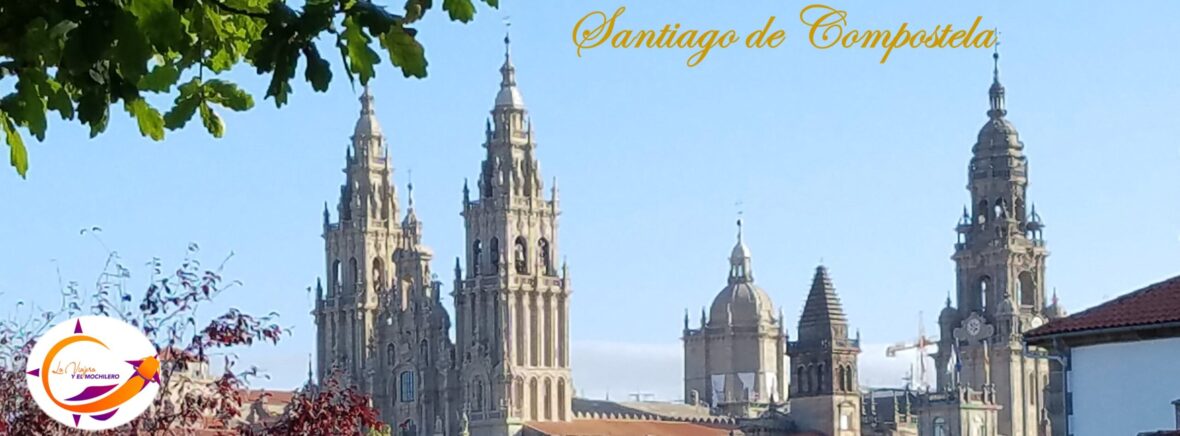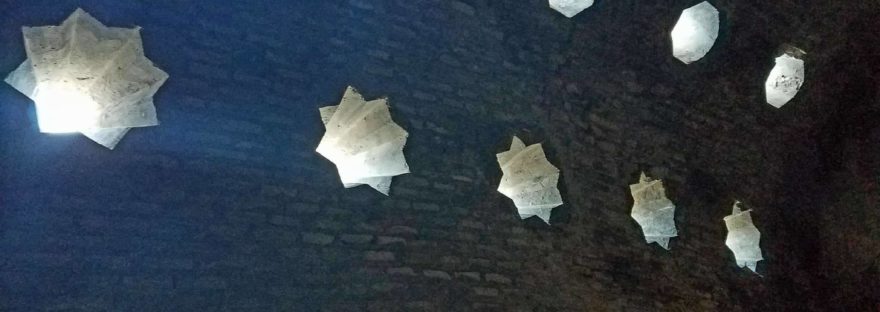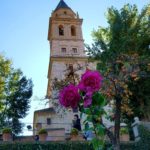 Saint Mary’s Church of the Alhambra, Granada. Continue reading “Saint Mary’s Church of the Alhambra”
Saint Mary’s Church of the Alhambra, Granada. Continue reading “Saint Mary’s Church of the Alhambra”
Category: “Granada”
Path of Sadness
 Path of Sadness, a free translation for the “Paseo de los Tristes” is in the Valley of the Darro River, between the hills of the “Alhambra” and the “Albaicín”, a place with a story of which Sadness is just its name. Continue reading “Path of Sadness”
Path of Sadness, a free translation for the “Paseo de los Tristes” is in the Valley of the Darro River, between the hills of the “Alhambra” and the “Albaicín”, a place with a story of which Sadness is just its name. Continue reading “Path of Sadness”
Church of “San Gil” and “Santa Ana” – Granada
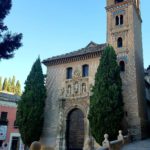 Located on the left bank of the Darro River on a small square annexed to the area dominated by the “Plaza Nueva”, the Church of Santa Ana, also known as Church of San Gil and Santa Ana, is part of set of Mudejar churches in the city of Granada . Continue reading “Church of “San Gil” and “Santa Ana” – Granada”
Located on the left bank of the Darro River on a small square annexed to the area dominated by the “Plaza Nueva”, the Church of Santa Ana, also known as Church of San Gil and Santa Ana, is part of set of Mudejar churches in the city of Granada . Continue reading “Church of “San Gil” and “Santa Ana” – Granada”
The Nogal Baths
Since the late nineteenth century, the Nogal Baths have been known by the name of “Bañuelo”, diminutive used to describe because of its size, the smallest of the royal baths in the “Alhambra”. Continue reading “The Nogal Baths”
Patio of Comares
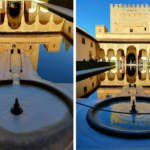 The Patio of Comares, in the Alhambra, Granada, Spain. “Water is the mysterious life of the Alhambra; produces lush gardens, the splendor of flowering shrubs, lies in pools that reflect the elegant colonnaded halls (…) “according to Titus Burckhardt, art critic and Swiss art historian, who was noted for being a great connoisseur of civilization and Islamic art. Continue reading “Patio of Comares”
The Patio of Comares, in the Alhambra, Granada, Spain. “Water is the mysterious life of the Alhambra; produces lush gardens, the splendor of flowering shrubs, lies in pools that reflect the elegant colonnaded halls (…) “according to Titus Burckhardt, art critic and Swiss art historian, who was noted for being a great connoisseur of civilization and Islamic art. Continue reading “Patio of Comares”
The New Plaza
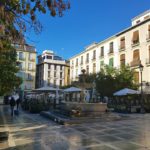 The New Plaza in Granada, Spain, is an urban space of an approximately rectangular shape. Much of its plant sits on the vault of the channeled Darro river that crosses longitudinally, from north to south, and on which has been built. Continue reading “The New Plaza”
The New Plaza in Granada, Spain, is an urban space of an approximately rectangular shape. Much of its plant sits on the vault of the channeled Darro river that crosses longitudinally, from north to south, and on which has been built. Continue reading “The New Plaza”
The “Comares” Palace
Upon arriving at the Alhambra, we confirmed that the Comares Palace is in effect one of the most precious jewel in the compound. We observed it carefully, as if wanting to record every single detail and unique element in our minds. It was a real privilege enjoying it. Continue reading “The “Comares” Palace”
The “Bañuelo” of Granada
We finally got to see what had us very curious, the famous Arab baths and a little of their history. Since the late XIX century, the Nogal Baths are known simply as the “Bañuelo”, a diminutive used since it is smaller in size than other royal baths in the Alhambra.
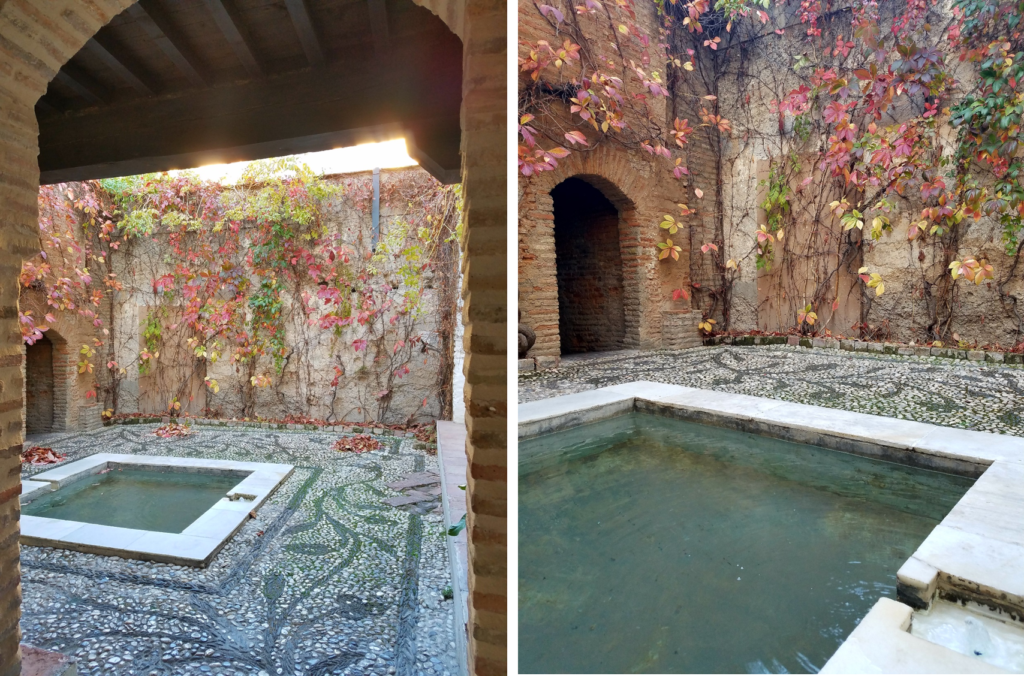
The “Bañuelo” of Granada is one of the oldest, most important and most completely conserved in Spain. It is also considered as one of the oldest Moorish works in Granada. It is rectangular in shape with concrete walls with the different halls being covered by brick vaults with skylights in octagonal and star shape, thus providing lighting. We confirmed that these were in fact skylights.
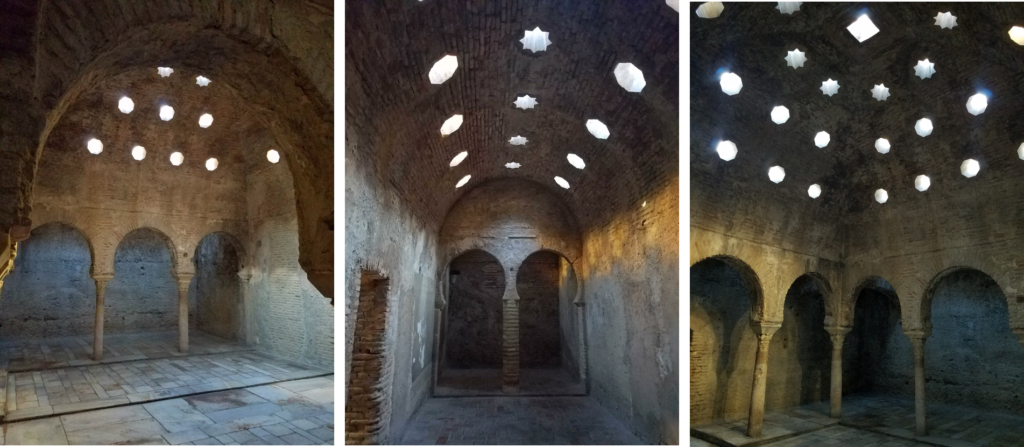
During the reign of the Catholic Kings, the Arab or Moorish baths were considered to be brothels, therefore it is amazing that this “Bañuelo” was conserved so well.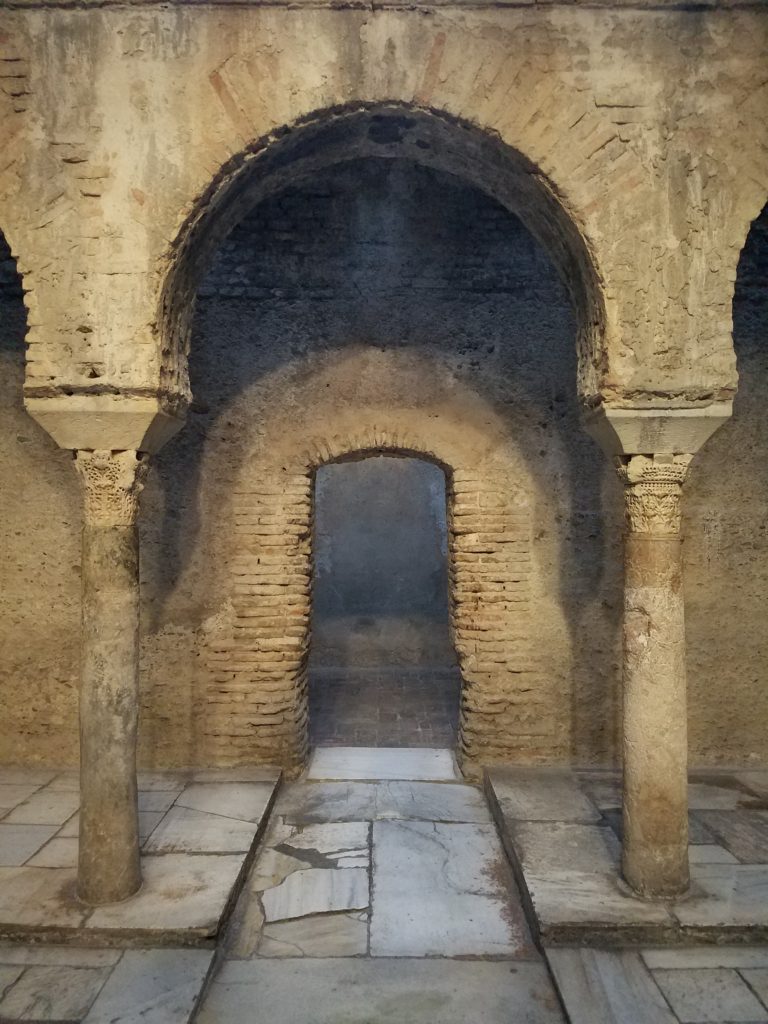
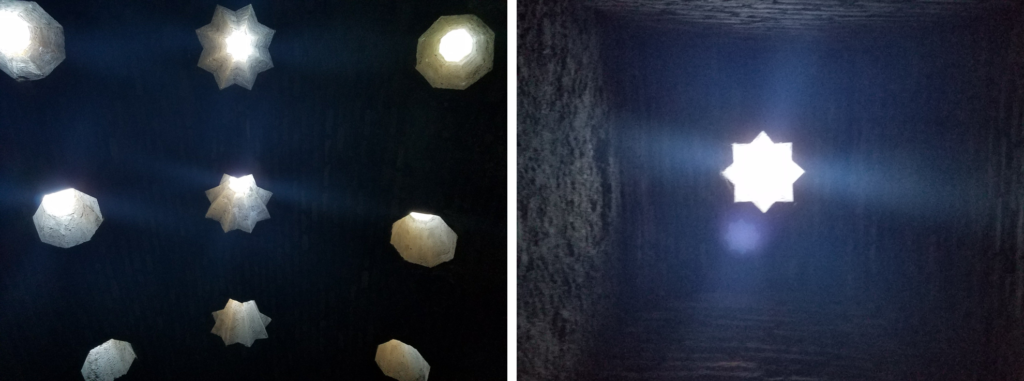
Scholars and experts have been unable to agree on when this “Bañuelo” was actually built. Yet, everything seems to point towards the end of the Zirid Dyanasty, somewhere between the XI and XII centuries. 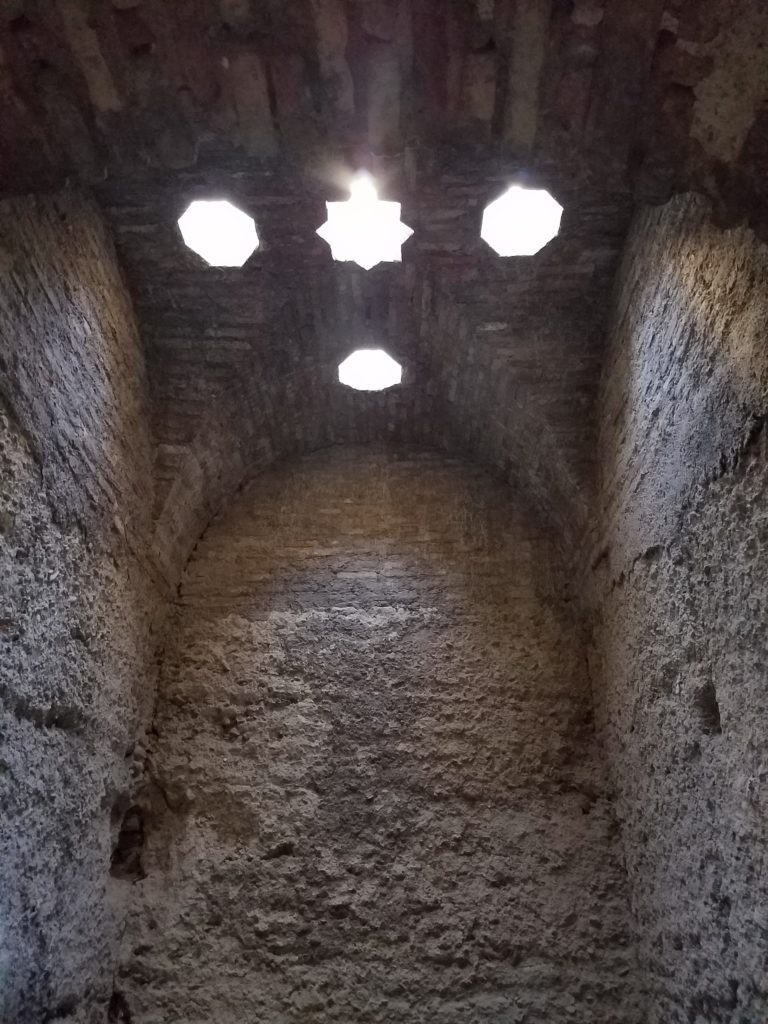 It has a privileged location on a important street in a highly populated area and near the Bab al-Bunud gateway, known as the Gate of Banners.
It has a privileged location on a important street in a highly populated area and near the Bab al-Bunud gateway, known as the Gate of Banners.
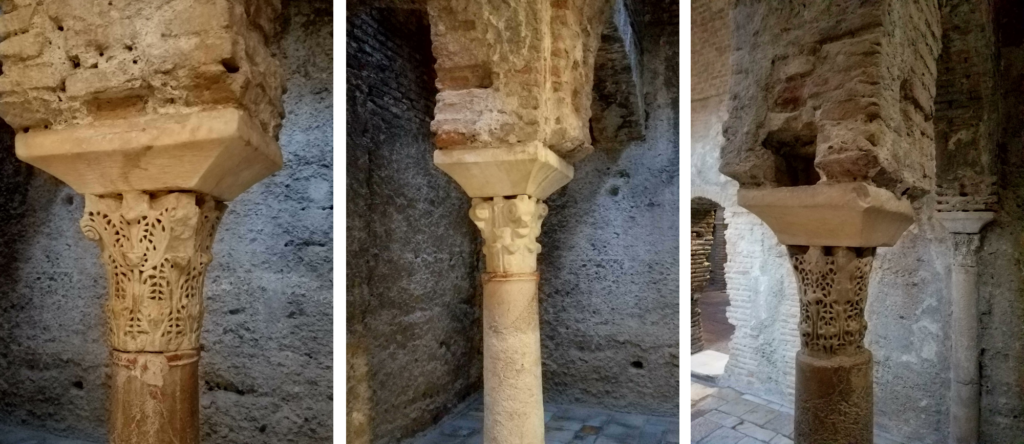
The “Bañuelo” of Granada was declared a National Monument in 1918 and the architect Torres Balbás was in charge of its restoration.
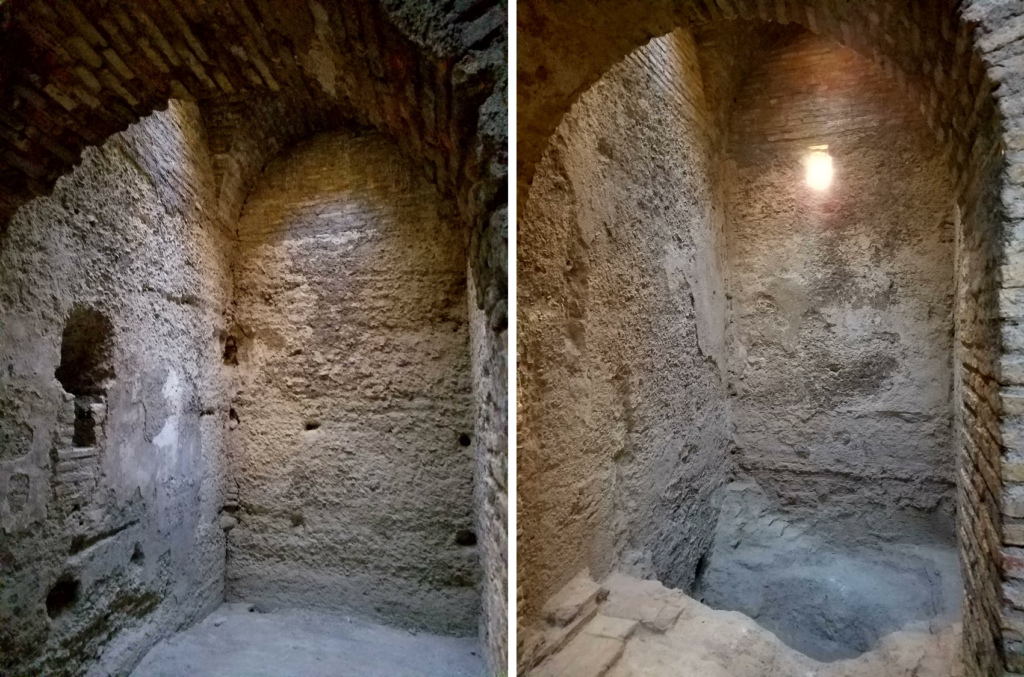
When in Granada, visiting the “Bañuelo” should be on your bucketlist. A great experience.
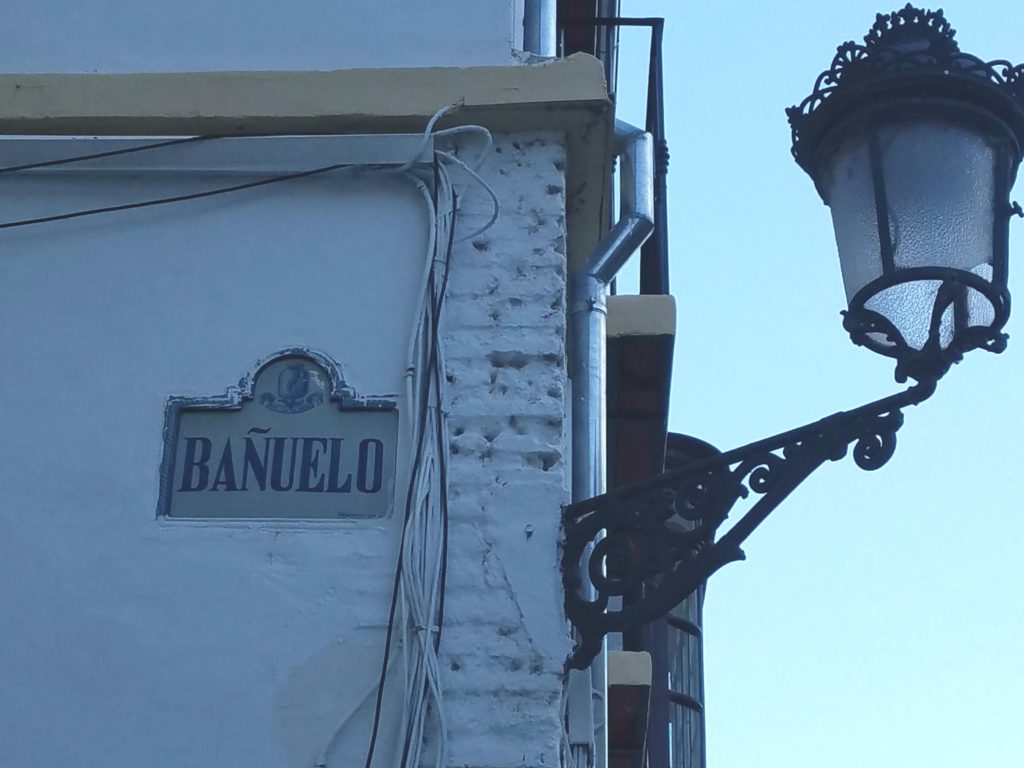
The “Bañuelo” is open Tuesday through Saturday from 10:00am to 2:00pm. It is closed on Mondays, Sundays and holidays.
Address: Carrera del Darro 31, Granada
Telephone: 958 229 738
Entry price: €2,00
The Patio of the “Doncellas”
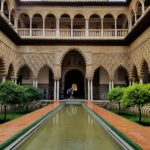 It is hard to believe that what we now-a-day know as the “Patio de las Doncellas” in the “Real Alcázar ” of Seville was in part, once buried beneath a marble pavement. The structure’s bedding and a pond were uncovered as an archaeological finding in 2002. As a result of this, the structure of this old Moorish garden was revealed, making it a very relevant event for the archaeological history of medieval Spain. Continue reading “The Patio of the “Doncellas””
It is hard to believe that what we now-a-day know as the “Patio de las Doncellas” in the “Real Alcázar ” of Seville was in part, once buried beneath a marble pavement. The structure’s bedding and a pond were uncovered as an archaeological finding in 2002. As a result of this, the structure of this old Moorish garden was revealed, making it a very relevant event for the archaeological history of medieval Spain. Continue reading “The Patio of the “Doncellas””
“El Partal”
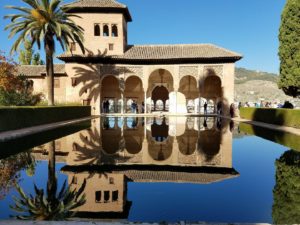
During our visit to the Alhambra we came across “El Partal”. This term is derived from from the Arab word “bartal” which references a portal, this being the highlighted architectural element of this structure. We can view how the portal of five arches is reflected in the pond before it. “El Partal” is on the walls of this citadel and is the oldest palace of those conserved within the Alhambra.
